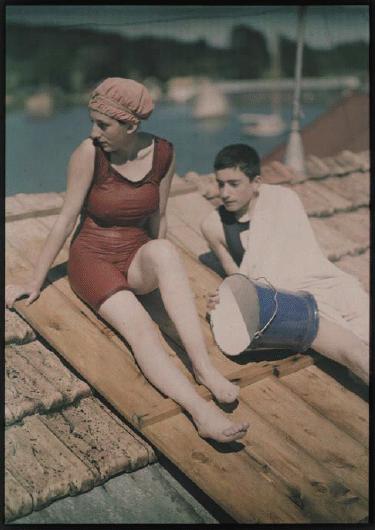- Relief printing
- Intaglio and planographic printing
- Color printing
- Bits and pieces
- Early photography in silver
- Non-silver processes
- Modern photography
- Color notes
- Color photography
- Photography in ink: relief and intaglio printing
- Photography in ink: planographic printing
- Digital processes
- Where do we go from here?
Color Photography

Lumière Autochrome. Photographer unknown. Bathers at Lake George. c. 1918. 6 3/4 x 4 3/4” (17.2 x 12 cm). The Museum of Modern Art, New York. Gift of Richard Benson.
The first practical photographic process in color, the Lumière Autochrome, used the additive colors of red, green, and blue. The Autochrome plate was glass coated with grains of potato starch that had been dyed these colors. The image is exposed to light and developed directly on the glass, so there was no negative from which to make copies; each Autochrome was unique. Because they were glass transparencies, Autochromes were much less useful than paper prints.

